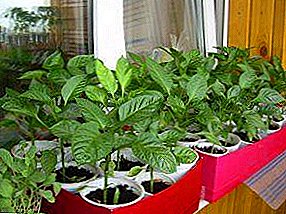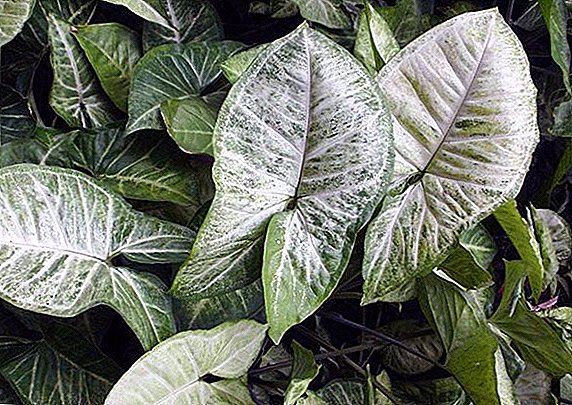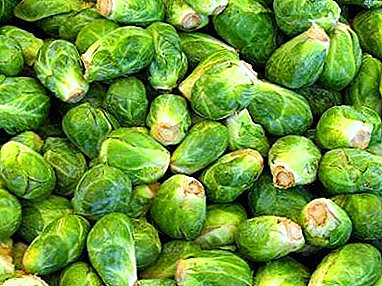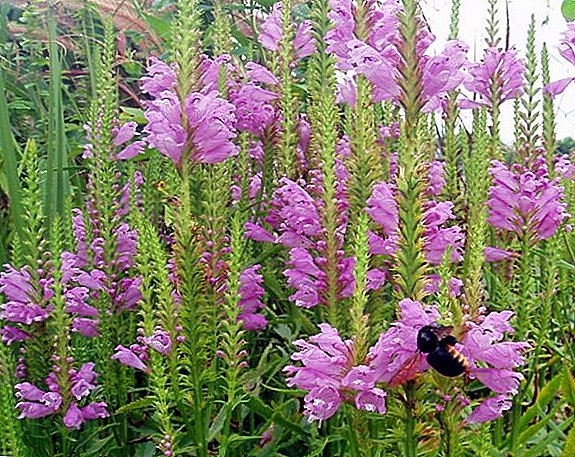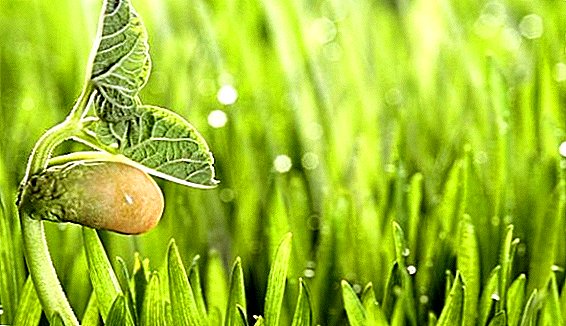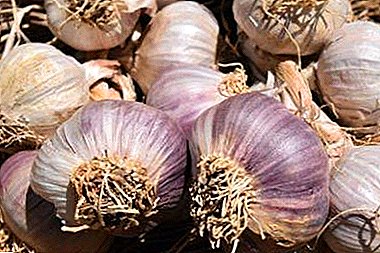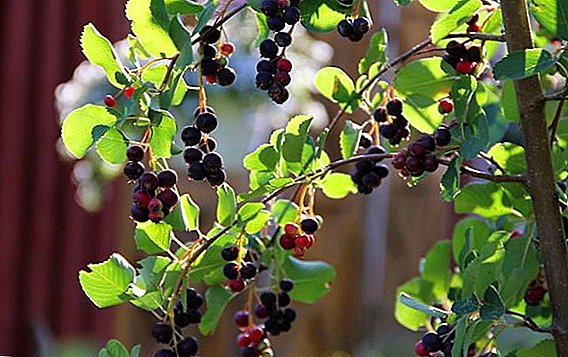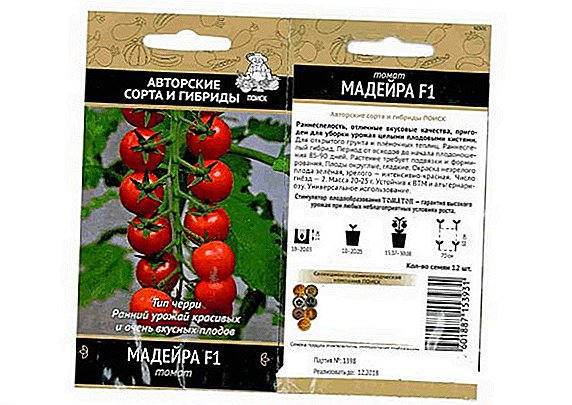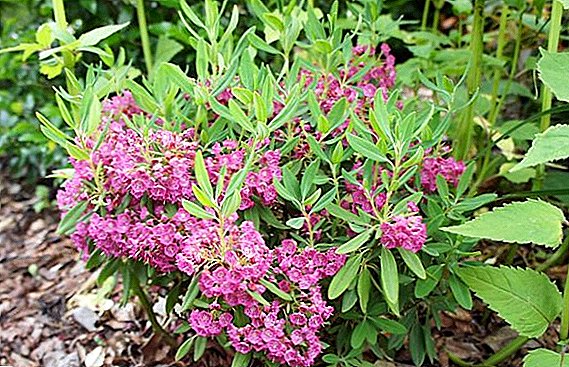 Luxurious shrubs of flowering calcium are found in almost every French, English, German, Canadian, California and Florentine gardens. This is a worthy decoration, which is second only to rhododendron in its beauty. For Ukrainian gardeners, this evergreen perennial is still an alluring and mysterious mystery, which is occasionally found in private collections, botanical gardens and greenhouses.
Luxurious shrubs of flowering calcium are found in almost every French, English, German, Canadian, California and Florentine gardens. This is a worthy decoration, which is second only to rhododendron in its beauty. For Ukrainian gardeners, this evergreen perennial is still an alluring and mysterious mystery, which is occasionally found in private collections, botanical gardens and greenhouses.
What to choose for your site, what types and grades of calcium exist, what they are in planting and care - we will tell about all this later in the article.
Kalmiya broadleaf (mountain laurel)
Kalmiya broadleaf (Kalmia latifolia) is one of the most beautiful varieties of this evergreen tree shrub. In the wild, the plant is found only in the tropical latitudes of the United States of America. Some of its cultivated varieties can adapt to the subtropical climate of Eurasia. 
Did you know? Kalmiya got its name in honor of the Swedish professor Pierre Calma, who in the middle of the XVIII century made the first attempts to cultivate woody plants from the North American continent on European lands.
In culture, the broadleaf species of calcium has appeared since 1734. And today it adorns the garden and park zones of Great Britain, Germany, Italy, Austria, as well as the south-eastern regions of the Czech Republic and Poland. The plant does not tolerate harsh winterstherefore, during the cold season, it requires a special shelter in the form of a warmed timber or wooden frame. Experienced gardeners warn of unpleasant surprises with which cultivation of a flower in an open ground can end.
The following shrubs have good decorative properties: budleya, rhododendron, weigela, forsythia, silverweed, karyopteris, Canadian roses, lilac, spirea, panicle hydrangea, Japanese quince, hawthorn, dogrose, yew, boxwood, juniper.
Outwardly, this view is a wide shrub with a spreading crown, height and width from one and a half to three meters. In the area, its size reaches up to 12 m. For culture, elliptical leaves are characteristic, which are very similar to laurel. Thanks to them, Calmia received its second name "mountain laurel". Each sheet plate reaches a length of 10 to 50 cm. The foliage is yellowish below and dark green above.  In the middle of summer, the shrub is thickly covered with pale pink saucer-shaped flowers, each about 3 cm in diameter. Their peduncles (often 250 pieces) are gathered in luxurious inflorescences that are located on the tops of the shoots. During flowering, they completely cover the crown, turning the bush into a fabulous ball of delicate petals and dark anthers.
In the middle of summer, the shrub is thickly covered with pale pink saucer-shaped flowers, each about 3 cm in diameter. Their peduncles (often 250 pieces) are gathered in luxurious inflorescences that are located on the tops of the shoots. During flowering, they completely cover the crown, turning the bush into a fabulous ball of delicate petals and dark anthers.
Did you know? Kalmiya broadleaf differs intricate structure of flowers, which allows them to make cross-pollination. Due to the filaments bent into an arc and the petal tabs resembling pockets, this process occurs without the intervention of insects. During the opening of the buds, the stamens straighten, and the anthers at this moment throw pollen through the open gaps.
Kalmiya broadleaf is the most demanding for planting and care. Her whims consist in a painful reaction to transplants, requirements for the physicochemical characteristics of the soil and moisture in the air. Therefore, the plant in vain is better not to bother. Immediately decide on a permanent place for him. In the garden, the shrub prefers loose and nutritious substrates with an acidic and slightly acidic pH in well-lit areas. In the heat he needs abundant watering and irrigation of the crown.  Breeders have been able to improve many forms of this type of calcium. Its varietal variety and color range is breathtaking. Every new creation wants to be summarized with the single word "I want." Of the entire range in our gardens, the following varieties feel more comfortable:
Breeders have been able to improve many forms of this type of calcium. Its varietal variety and color range is breathtaking. Every new creation wants to be summarized with the single word "I want." Of the entire range in our gardens, the following varieties feel more comfortable:
- Elf - compact dwarf shrub, up to 70 cm in height with white and pink flowers;
- Carousel - differs in bright crimson ornament on white petals;
- Bandeau - blooms with pale scarlet buds, in which the dark maroon base;
- Black labe - The height of this shrub reaches 1.3 m, and the flowers stand out with white petals and a dark-brown throat;
- Bullseye - This variety is characterized by purple buds, in which the white throat and edging.





Did you know? Kalmiya broadleaf officially recognized as a symbol of Connecticut.
Narrow-leaved kalmia (sheep laurel)
The narrow-leaved Kalmia (Kalmia angustifolia) is less elegant compared to the previous species, but nevertheless it is classified by botanists to highly decorative flowering plants of North American origin. In their native environment, evergreen shrubs up to 2 m high are found on forest edges and undergrowths.  In culture, the species appeared in 1736. But initially it was called "hamedafne narrow-leaved." The current name of the flower received from Carl Linna only 17 years later. Today, culture has received recognition from gardeners in the United States, Canada, France, England, Germany, Belgium, Poland, Denmark and the Czech Republic.
In culture, the species appeared in 1736. But initially it was called "hamedafne narrow-leaved." The current name of the flower received from Carl Linna only 17 years later. Today, culture has received recognition from gardeners in the United States, Canada, France, England, Germany, Belgium, Poland, Denmark and the Czech Republic.
Outwardly, it is a low plant with powerful lignified stems in height from 1 to 1.5 m. Its decoration is very elegant funnel-shaped flowers, which are collected in umbrella-shaped brushes, and oblong graceful leaves. Each leaf plate is about 6 cm long. From above it is dark green and light shades with a light smoky shade prevail from below.  Flowers in diameter reach about 1.5 cm, merging in dense inflorescences of delicate white and pink colors, for a month create a fabulous atmosphere in the garden. This bush will easily fit into any landscape architecture and adequately decorate the site. The narrow-leaved species is more adapted to the conditions of temperate climatic latitudes.
Flowers in diameter reach about 1.5 cm, merging in dense inflorescences of delicate white and pink colors, for a month create a fabulous atmosphere in the garden. This bush will easily fit into any landscape architecture and adequately decorate the site. The narrow-leaved species is more adapted to the conditions of temperate climatic latitudes.
Important! Kalmiya is a poisonous plant. Its stems, leaves and flowers, due to the contained glycosides of andrometoxin, in no case should not be in contact with the mucous membranes of the human body. Each time after touching the shrub, wash your hands thoroughly, and when working in the garden avoid contact with the flower face.
Mature plants of narrow-leaved kalm rarely freeze slightly, and young specimens require special shelter for the winter. Often, peat or dry leaves in tree trunks is enough for the crop to overwinter. For its landing semi-shady areas are ideal, far from the prevailing drafts, northerly winds and lowlands. It is better to choose acidic substrates with a sufficient amount of nutrients.
For its landing semi-shady areas are ideal, far from the prevailing drafts, northerly winds and lowlands. It is better to choose acidic substrates with a sufficient amount of nutrients.
Such poisonous plants as a cupola, a wolfberry, a bathing suit, an autumn crocus, a dodder, a yew berry, a rue, buttercups, a wild roseum the marsh not only grow up on garden sites, but also use in traditional medicine.Among the varieties are popular:
- Alba - low compact bush with white flowers;
- Compacta - a dwarf variety of narrow-leaved calcium, which is characterized by half-meter lignified stems and light red buds;
- Purpurflor - it is distinguished by goblet dark purple flowers and short stalks;
- Rubra - slow-growing variety, which is characterized by the diameter and height of the bush at 1 m, as well as saturated red buds.



Small-scale kalmiya
Small-leaf kalmia (Kalmia microphylla) is widely known to residents of the western States of America and central Canada, where it comes from. Its evergreen shrubs in the wild spread far to the North, to the Arctic Circle. They can be found on the heath steppes, where acidic wet soils. 
Important! Most varieties of calcium in the winter and spring react very painfully to direct sunlight.
Outwardly, it is a medium-shrub shrub with stems up to 2 m in height, strong sprawling branches, which at the beginning of development are green and heavily pubescent, and when mature, become smooth and brown. The foliage on the plant is rigid, lanceolate, with curled ends.  Small-leaved calmia is easy to get mixed up with multi-leaf. It is possible to distinguish the first from the second by pink and crimson, uviform brushes, which consist of flowers resembling bells. As a rule, they have 5 petals, between which the stamens are located.
Small-leaved calmia is easy to get mixed up with multi-leaf. It is possible to distinguish the first from the second by pink and crimson, uviform brushes, which consist of flowers resembling bells. As a rule, they have 5 petals, between which the stamens are located.
Kalmya many-leaved
Kalmia polifolia (Kalmia polifolia) in everyday life is called "swamp laurel", which is explained by the natural environment of the plant.
In the wild, it can be found in cold swampland from Newfoundland to Hudson Bay. 
Important! To improve the substrate on the site where the planting of calcium is planned, experts recommend to mix 3 parts of peat and leaf soil, and also add 1 portion of coniferous litter and river sand. It is advisable to add mineral complex fertilizers to the substrate at the rate of 1 tablespoon per planting pit.
Not all scientists recognize this type of calmia. His supporters among the distinguishing characteristics point out a strong well-developed root system of a shrub, an evergreen neat crown that reaches a diameter of not more than 60 cm. Ascending stems of a culture develop just above half a meter.
A specific feature of the multi-leaved species is the purple bark on young branches, and to the extent of their aging, it becomes gray. The foliage of the shrub differs from the above described species by its small size and its density. Due to the dense biomass, the compact crown is more rounded, which gives the culture a special decoration.  At the tops of the branches are single scarlet flowers in the shape of bells. The shrub begins to bloom much earlier than its fellows in April. Its growth is very slow.
At the tops of the branches are single scarlet flowers in the shape of bells. The shrub begins to bloom much earlier than its fellows in April. Its growth is very slow.
Kalmiya boxwood
The peculiarity of boxwood Kalmia (Kalmia buxifolia) lies in the strong variation of the plant's external appearance. It can be a shrub, height from 20 cm to 1 m with opposite or alternate foliage. The shape of the leaf plate can also be different: in some specimens it is ovoid in others, the lanceolate is elongated. In all cases, the length of the leaves is not more than 1.4 cm. 
Important! When ingested, poisonous andrometoxin slows down the heart, contributes to lowering blood pressure, and also causes respiratory edema, dizziness, vomiting, and digestive dysfunction.
Umbrella inflorescences are densely located on the branches, which consist of 18 individual flowers of white or scarlet color. The area of culture is the eastern coastal zones of the United States of America. The shrub is completely undemanding to the soil features, because in this aspect it is as unpredictable as in its appearance. In the wild, some specimens prefer sandy plains, while others prefer rocky shores and mountain forests. In the garden, such a flower will surely be comfortable on a loose substrate enriched with fertilizers and sour.  Botanists distinguish only 8 species of calcium, and there are many open questions about this. But flower growers irrevocably chose broad-leaved and narrow-leaved species for their plots. They are considered the most promising and, of course, decorative. So feel free to choose a flower to your liking and indulge it so that it will delight you with its indescribable beauty.
Botanists distinguish only 8 species of calcium, and there are many open questions about this. But flower growers irrevocably chose broad-leaved and narrow-leaved species for their plots. They are considered the most promising and, of course, decorative. So feel free to choose a flower to your liking and indulge it so that it will delight you with its indescribable beauty.


